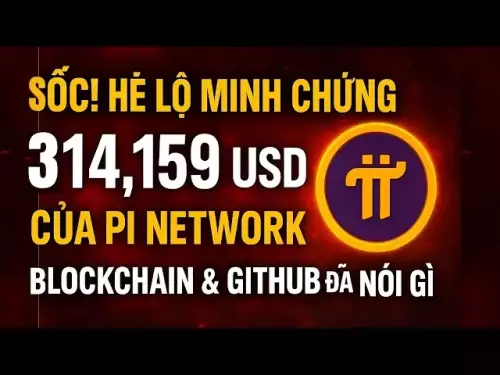-
 bitcoin
bitcoin $109547.008142 USD
0.04% -
 ethereum
ethereum $4011.838726 USD
-0.05% -
 tether
tether $1.000402 USD
-0.01% -
 xrp
xrp $2.798606 USD
0.88% -
 bnb
bnb $970.877944 USD
1.39% -
 solana
solana $202.237275 USD
-0.95% -
 usd-coin
usd-coin $0.999673 USD
0.00% -
 dogecoin
dogecoin $0.229294 USD
-1.15% -
 tron
tron $0.336370 USD
-0.45% -
 cardano
cardano $0.777260 USD
-1.66% -
 hyperliquid
hyperliquid $45.503019 USD
1.73% -
 ethena-usde
ethena-usde $1.000362 USD
0.01% -
 chainlink
chainlink $20.785303 USD
-1.10% -
 avalanche
avalanche $28.755822 USD
-0.11% -
 stellar
stellar $0.358303 USD
-0.48%
Analysis of perpetual contract funding rates: rate calculation and arbitrage strategies
Perpetual contracts' funding rates, calculated using premium index and interest rate, impact profitability and enable arbitrage strategies across exchanges.
Jun 08, 2025 at 07:21 am

In the world of cryptocurrency trading, perpetual contracts have gained significant popularity due to their unique features, such as no expiration date and leverage trading. One critical aspect of these contracts is the funding rate, which plays a pivotal role in maintaining the price alignment between the perpetual contract and the underlying asset. This article delves into the intricacies of funding rate calculation and explores various arbitrage strategies that traders can employ to capitalize on these rates.
Understanding Perpetual Contract Funding Rates
Perpetual contracts are derivative instruments that allow traders to speculate on the price movement of an asset without owning it. The funding rate is a mechanism designed to ensure that the price of the perpetual contract closely tracks the spot price of the underlying asset. This rate is periodically exchanged between long and short positions, depending on whether the contract's price is higher or lower than the spot price.
The funding rate can be positive or negative. A positive funding rate means that long positions pay short positions, while a negative rate means that short positions pay long positions. The rate is typically calculated and settled at regular intervals, often every 8 hours, though this can vary between exchanges.
Calculation of Funding Rates
The funding rate is calculated using a specific formula that takes into account the difference between the perpetual contract's price and the spot price of the underlying asset. The general formula used by most exchanges is:
[ \text{Funding Rate} = \text{Premium Index} + \text{Clamp}(\text{Interest Rate} - \text{Premium Index}, \text{Lower Bound}, \text{Upper Bound}) ]
Here's a breakdown of the components:
- Premium Index: This is the difference between the perpetual contract price and the spot price, averaged over a specific period.
- Interest Rate: This is typically the rate at which the underlying asset could be borrowed or lent.
- Clamp Function: This function ensures that the funding rate does not exceed certain bounds, which are set by the exchange.
For example, if the premium index is 0.01%, the interest rate is 0.03%, and the clamp function bounds are -0.05% and 0.05%, the funding rate would be calculated as follows:
[ \text{Funding Rate} = 0.01\% + \text{Clamp}(0.03\% - 0.01\%, -0.05\%, 0.05\%) = 0.01\% + 0.02\% = 0.03\% ]
Impact of Funding Rates on Trading
Funding rates have a direct impact on the profitability of holding a perpetual contract position. If the funding rate is positive, traders holding long positions will incur a cost, while those holding short positions will receive a payment. Conversely, if the funding rate is negative, long positions will receive a payment, and short positions will incur a cost.
Traders need to be aware of the funding rate when holding positions over multiple funding periods. The cumulative effect of these rates can significantly impact the overall profitability of a trade. For instance, if a trader holds a long position in a market with a consistently positive funding rate, the cost of holding that position can erode potential profits.
Arbitrage Strategies Based on Funding Rates
Arbitrage involves exploiting price differences between different markets or instruments. In the context of perpetual contracts, traders can use funding rates to identify and execute arbitrage opportunities. Here are some common strategies:
Funding Rate Arbitrage
Funding rate arbitrage involves taking advantage of differences in funding rates between different exchanges or between a perpetual contract and a futures contract. If one exchange has a significantly higher funding rate than another, a trader can open a long position on the exchange with the lower rate and a short position on the exchange with the higher rate. The difference in funding rates can be pocketed as profit.
For example, if Exchange A has a funding rate of 0.05% and Exchange B has a funding rate of 0.01%, a trader could:
- Open a long position on Exchange B
- Open a short position on Exchange A
The trader would receive 0.01% from Exchange B and pay 0.05% to Exchange A, resulting in a net funding payment of 0.04%. This strategy can be profitable if the difference in funding rates is significant and consistent.
Cross-Exchange Arbitrage
Cross-exchange arbitrage involves exploiting price differences between the same perpetual contract listed on different exchanges. If the price of a perpetual contract on one exchange is higher than on another, a trader can buy the contract on the lower-priced exchange and sell it on the higher-priced exchange. This strategy can be combined with funding rate arbitrage to maximize profits.
To execute cross-exchange arbitrage:
- Identify a perpetual contract listed on multiple exchanges
- Monitor the price and funding rate of the contract on each exchange
- Buy the contract on the exchange with the lower price and lower funding rate
- Sell the contract on the exchange with the higher price and higher funding rate
Basis Trading
Basis trading involves taking positions in both the spot market and the perpetual contract market to exploit the difference between the two. If the perpetual contract is trading at a premium to the spot price, a trader can sell the perpetual contract and buy the underlying asset. Conversely, if the contract is trading at a discount, the trader can buy the perpetual contract and sell the underlying asset.
To execute basis trading:
- Identify a significant difference between the perpetual contract price and the spot price
- If the contract is at a premium, sell the contract and buy the spot asset
- If the contract is at a discount, buy the contract and sell the spot asset
- Monitor the funding rate and adjust positions accordingly to maximize profits
Monitoring and Executing Arbitrage Opportunities
To successfully execute arbitrage strategies based on funding rates, traders need to have robust monitoring systems in place. This involves:
- Real-time data feeds from multiple exchanges to track prices and funding rates
- Automated trading algorithms to execute trades quickly and efficiently
- Risk management tools to monitor and mitigate potential losses
Here are some steps to set up an effective monitoring and execution system:
- Choose reliable data providers that offer real-time data on prices and funding rates across multiple exchanges
- Develop or use existing trading algorithms that can automatically execute trades based on predefined conditions
- Implement risk management protocols to limit exposure and protect against adverse market movements
- Regularly review and adjust the system to ensure it remains effective and aligned with market conditions
Frequently Asked Questions
Q: How often are funding rates typically settled on cryptocurrency exchanges?A: Funding rates on most cryptocurrency exchanges are settled every 8 hours, though some exchanges may have different intervals.
Q: Can funding rates be negative, and what does it mean for traders?A: Yes, funding rates can be negative. A negative funding rate means that traders holding short positions pay traders holding long positions. This occurs when the perpetual contract price is lower than the spot price.
Q: Are there any risks associated with funding rate arbitrage strategies?A: Yes, funding rate arbitrage involves several risks, including execution risk, where trades may not be executed at the desired prices, and market risk, where the price differences between exchanges can change rapidly. Additionally, there may be liquidity risks if the volumes on one exchange are significantly lower than on another.
Q: How can traders protect themselves from the risks associated with funding rate arbitrage?A: Traders can protect themselves by implementing strict risk management protocols, such as setting stop-loss orders, diversifying their arbitrage strategies across multiple exchanges, and continuously monitoring market conditions to adjust their positions accordingly.
Disclaimer:info@kdj.com
The information provided is not trading advice. kdj.com does not assume any responsibility for any investments made based on the information provided in this article. Cryptocurrencies are highly volatile and it is highly recommended that you invest with caution after thorough research!
If you believe that the content used on this website infringes your copyright, please contact us immediately (info@kdj.com) and we will delete it promptly.
- BONK Investment: From $1K to $96K Gains and the Hunt for the Next Big Meme Coin
- 2025-09-28 16:25:12
- zkVerify's VFY Token Lands on KuCoin: A New Era for Zero-Knowledge Proofs?
- 2025-09-28 16:45:14
- Cathie Wood, Hyperliquid, and Solana: Decoding the Future of Crypto
- 2025-09-28 16:45:14
- Pi Wallet: Guardian of Meritocracy and GCV Stability in the Pi Network
- 2025-09-28 16:25:12
- Crypto Bulls Target QNT Token: Will the Rally Last?
- 2025-09-28 16:50:01
- Quant's Rally: Bulls Eye $103 Liquidity Amidst Market Optimism
- 2025-09-28 16:30:01
Related knowledge

Practical parameter settings for a Bitcoin multi-timeframe moving average system
Sep 18,2025 at 10:54pm
Optimizing Timeframe Combinations for Bitcoin Trading1. Selecting appropriate timeframes is crucial when building a multi-timeframe moving average sys...

How can I filter out false breakouts in Dogecoin high-frequency trading?
Sep 22,2025 at 01:00am
Understanding False Breakouts in Dogecoin Trading1. A false breakout occurs when Dogecoin's price appears to move beyond a defined support or resistan...

Techniques for identifying tops and bottoms in the Bitcoin on-chain NVT model
Sep 20,2025 at 07:54pm
Understanding the NVT Model in Bitcoin Analysis1. The Network Value to Transactions (NVT) ratio is often described as the 'P/E ratio' of the cryptocur...

What does the surge in open interest in Bitcoincoin futures mean?
Sep 20,2025 at 11:18pm
Understanding the Surge in Dogecoin Futures Open Interest1. A surge in open interest within Dogecoin futures indicates a growing number of active cont...

How can I use the Ethereum USDT premium to gauge market sentiment?
Sep 18,2025 at 11:55pm
Understanding the Ethereum USDT Premium1. The Ethereum USDT premium refers to the price difference between USDT (Tether) traded on Ethereum-based plat...

What should I do if Ethereum staking yields decline?
Sep 20,2025 at 06:18am
Understanding the Causes Behind Declining Ethereum Staking Yields1. The Ethereum network transitioned to a proof-of-stake consensus mechanism with the...

Practical parameter settings for a Bitcoin multi-timeframe moving average system
Sep 18,2025 at 10:54pm
Optimizing Timeframe Combinations for Bitcoin Trading1. Selecting appropriate timeframes is crucial when building a multi-timeframe moving average sys...

How can I filter out false breakouts in Dogecoin high-frequency trading?
Sep 22,2025 at 01:00am
Understanding False Breakouts in Dogecoin Trading1. A false breakout occurs when Dogecoin's price appears to move beyond a defined support or resistan...

Techniques for identifying tops and bottoms in the Bitcoin on-chain NVT model
Sep 20,2025 at 07:54pm
Understanding the NVT Model in Bitcoin Analysis1. The Network Value to Transactions (NVT) ratio is often described as the 'P/E ratio' of the cryptocur...

What does the surge in open interest in Bitcoincoin futures mean?
Sep 20,2025 at 11:18pm
Understanding the Surge in Dogecoin Futures Open Interest1. A surge in open interest within Dogecoin futures indicates a growing number of active cont...

How can I use the Ethereum USDT premium to gauge market sentiment?
Sep 18,2025 at 11:55pm
Understanding the Ethereum USDT Premium1. The Ethereum USDT premium refers to the price difference between USDT (Tether) traded on Ethereum-based plat...

What should I do if Ethereum staking yields decline?
Sep 20,2025 at 06:18am
Understanding the Causes Behind Declining Ethereum Staking Yields1. The Ethereum network transitioned to a proof-of-stake consensus mechanism with the...
See all articles









































































